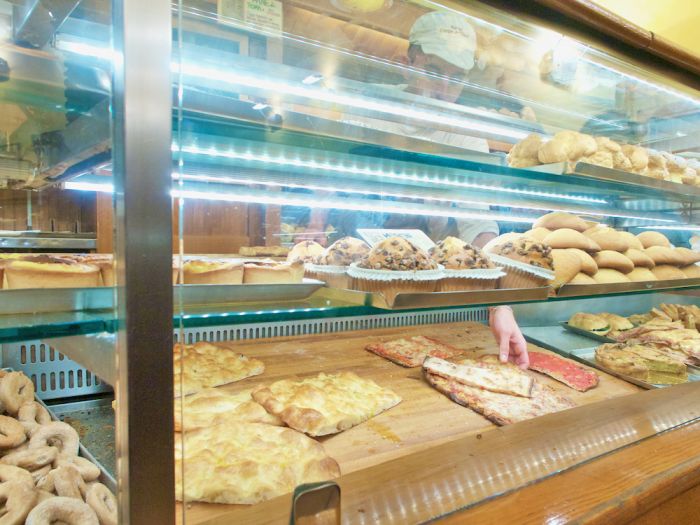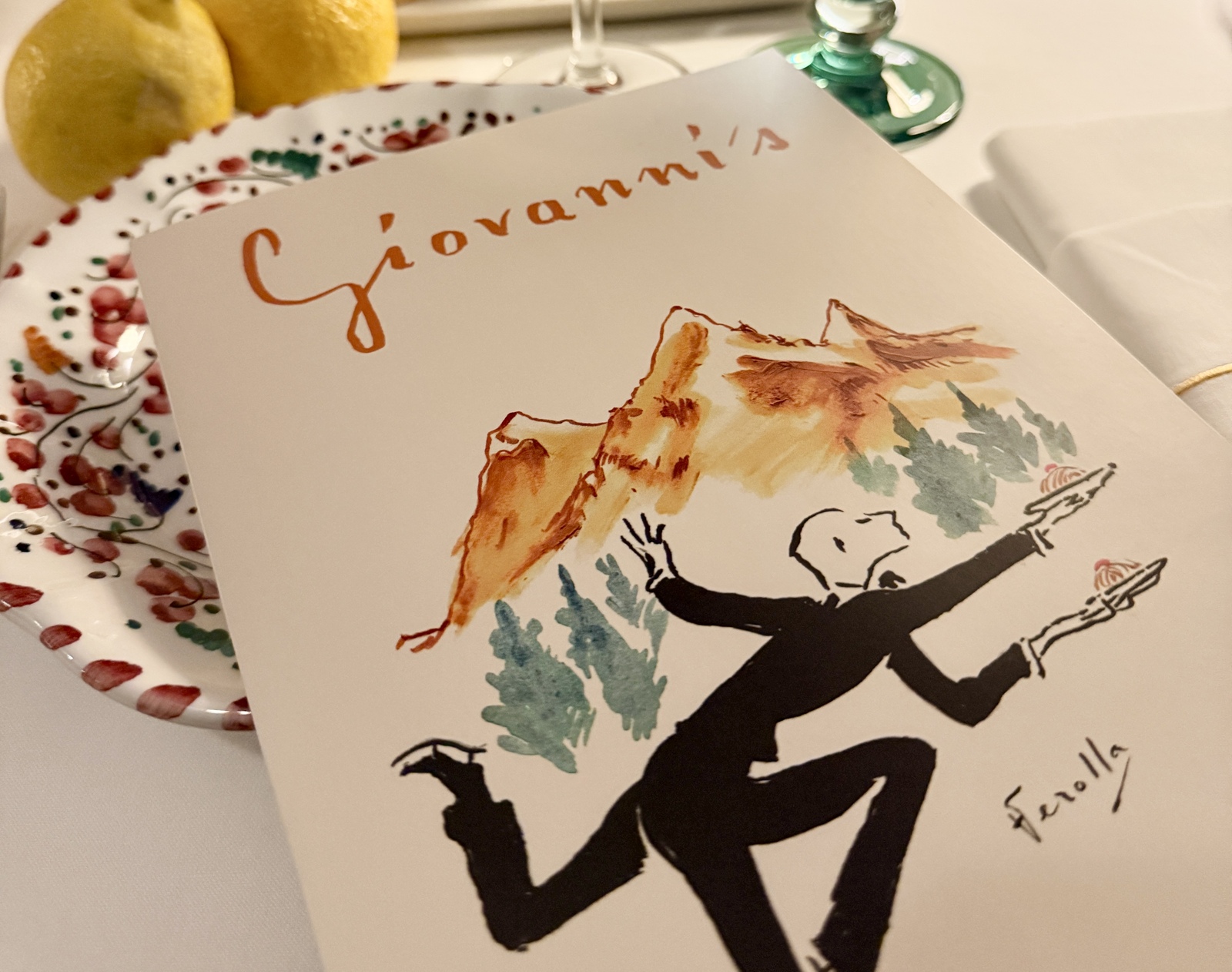
Aside from its rich store of antiquity, one of the unique attractions of Rome is its food and a walking tour focusing on its diverse and delectable cuisine or a cooking class with an experienced chef (or both) are key ingredients to a memorable stay in the Eternal City.
Here are a few choices that should satisfy your appetite for this aspect of its culture.

Fresh ingredients being the focus of Roman food, a visit to a lively outdoor market is an appropriate starting point. With the help of friendly Marilee Mortarotti of ‘LivItaly Tours,’ we did just that. After meeting the California-born musician and mother near her home in the district of Monte Sacro, we sauntered off to see what fruits and vegetables were in season at her local open-air market and decide what we needed for a cooking class with her. Marilee, who has lived in Rome for many years and whose husband, a fellow musician and composer from Italy, is very familiar with the various combinations of local produce in the make-up of traditional Roman foods.

Delightfully, the cooking class took place in her elegant upper-floor apartment, a cozy atmosphere made all the more so with family photos adorning the walls and beautiful furnishings. With the aid of champagne and wine, several hours passed rapidly in convivial conversation during which we succeeded in making not just one dish but an entire Italian menu, including antipasto of pizzelle fritte, mini pizzas; a ‘primo’ pasta dish of ravioli with ricotta and spinach; a mouth-watering ‘secondi’ of veal saltimbocca; and a dessert (‘dolce’) of crunchy biscotti. Aside from food, ‘LivItaly Tours,’ a family-owned company, offers other activities ranging from professional soccer games to Ferrari rides through the Italian countryside.

A spacious, ground-floor room - - a former chapel with its baptismal font still attached to one of the walls - in the historic neighborhood of Trastevere - is where Italian chef Pino and his US-born partner, Julia, have operated their cooking school, ‘Grano & Farina,’ for more than a year.

Accommodating up to eight persons per session, the couple teaches diverse classes including semifreddo, cannoli, tiramisù, crostata and pannacotta-desserts; pasta ranging from tortellini to Lombardian Casoncelli and Sicilian maccheroni; and even focaccia and brioche bread, as well as a host of other regional specialties and themed courses.
While with them, not only did we learn how to make three unique sauces and pasta but also how to choose a good prosciutto and what cheeses are more suitable for specific Roman dishes, with particular emphasis on the delicious pecorino variety made from ewe's milk.

Formerly an IT specialist, Pino’s love of cooking is genetic, a skill inherited from his grandmother and his mother. His array of experience includes operating a food catering service in the US and teaching French cooking in Paris for eight years before he returned to his native home. Julia, who studied pasta-making in Bologna and is also a fine photographer, patiently demonstrated the proper rolling techniques. Meanwhile, Pino taught us three seasonal ‘sughi’ – tomato-based puttanesca, veggie-based pesto and tagliatelle with prosciutto, peas and porcini mushrooms which we tasted afterward together. In addition to English, the couple also teach classes in French and Italian.

This is one of the most established walking activities in Rome, offering both day and evening options, the former including a market visit. We chose the latter, meeting our guide, the dynamic Jessenia Rojas, outside the Prati metro station for a leisurely ramble to nine of the area’s most well-known and diverse restaurants and food vendors.

Highlights included a fun-filled visit to Paciotti Salumeria, a long-standing, family-owned gourmet store selling various meats, cheeses, pasta and wines. Opened since 1970, we were highly-entertained by two brothers, Stefano and Luka, who were not only very well-informed about an impressive range of products ranging from aged parmesan to prosciutto but were also natural-born comedians. The four-hour tour also comprised ‘Pizzarium,’ an innovative pizzeria established by chef Gabriele Bonci featuring ingredients such as kale, pumpkin and provolone. One of the secrets to his flavorsome wavy, airy pizzas is the flour-grinding technique. Such has been Bonci’s success he recently opened in Chicago. Make sure you have an empty belly on this tour as it includes a sit-down meal at Al Giardino del Gatto e la Volpe, a family-owned, fine-dining restaurant where you’ll be served fried calamari, ‘fluffy pillow’ homemade gnocchi and ravioli, with wine accompaniment, followed by a sampling of innovative gelatos such as fennel and licorice, rose, walnuts and violet, quince and honey and walnuts and basil at Fatamorgana Gelateria.

Italian stage and film actress, Giada Benedetti, was our charming guide on the ‘Secret Food Tour,’ which centered on an area around Campo de'Fiori, a traditional market square south of Piazza Navona. Combining an informative history of interesting buildings and statues as well as food, the stroll encompassed the tasting of pizzas at ‘Forno Campo de' Fiori,’ one of the oldest bakeries in the city, where we learned about the differences in Rome’s most popular ‘slice’ snack, particularly the ‘bianca’ and ‘margherita’ varieties; and later, arancini, golf-ball size snacks of fried rice and meat ragu, and suppli, the Roman version made with cheese.

We were also informed about how coffee-drinking has become a ritual in Italy abiding by a specific etiquette and how drinking cappuccino or any milky form of coffee in the afternoon, or after a meal, is a cardinal sin; how the ‘ticket’ and ‘bar’ systems work; and how one should never use the term ‘espresso’ or ‘expresso.’
A visit to a gourmet food store at the edge of Rome’s historic Jewish quarter presented us with the opportunity to try an array of cheeses, including some from the Piedmont region which rivals parmesan, paired with a chardonnay from Langhe. To end the tour, we enjoyed a sit-down meal at a traditional restaurant of two classic dishes - pasta alla matriciana with its delicious sauce of tomato, onion, pig-cheek, known as ‘guanciale,’ and pecorino cheese and ‘cacio e pepe,’ made with pecorino Romano and fresh black pepper.














